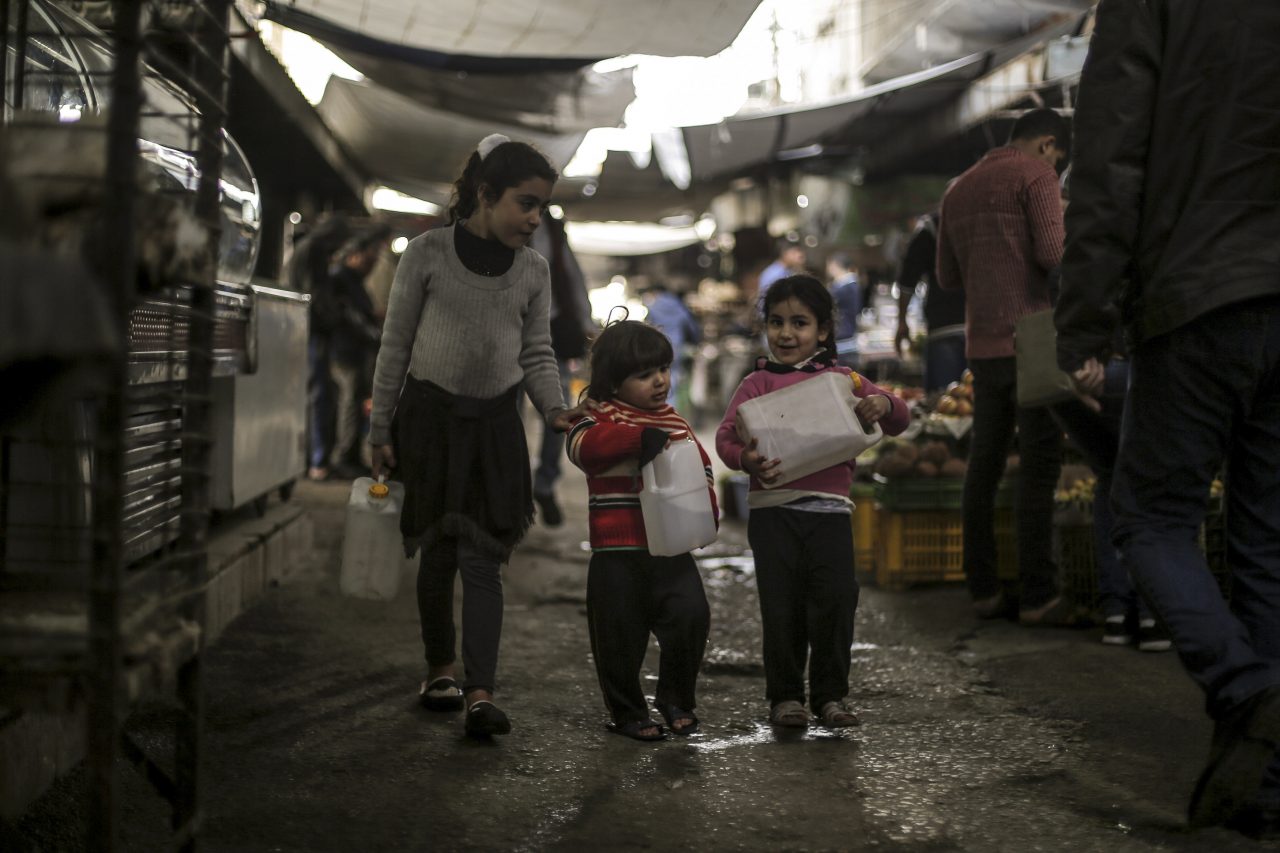Cities aren’t built for war
Given these challenges, could any of these ideas bear fruit in highly fragile states where urban infrastructure is being torn apart by conflict? “In times of acute crisis, maybe all we can do is import food and water to keep the population alive,” says Michael Mason, director of the Middle East Centre of the London School of Economics and Political Science. “But when the situation allows, if there is some kind of stability, then the infrastructure we design and build should be done in a way that recognizes the pressures that system will face.”
The problem is that urban systems aren’t designed with these pressures in mind. During conflict, water and energy facilities — often centralized for efficiency and safety — can come under attack, become damaged inadvertently or be deprived of fuel.
“That centralized way of designing was rational; there’s economy of scale and it’s easier to manage and control,” says Federico Sittaro, a strategic planner at the ICRC tasked with finding ways of building resilience into urban systems. “But in conflict, centralization often means that a failure at any one of many points can lead to total system failure. It’s proven to be a weakness.”
Given the climate predictions for many areas effected by long-term conflict, is it time to think differently about the way cities are rebuilt or assisted during warfare? “Donors sometimes come in and put in these technically impressive systems from the Western perspective,” says Mason. “But they may be very fragile because if one point in the system is hit, the whole system goes out.
“Low-tech or even no-tech solutions that are decentralized may be the best in many circumstances,” he adds, noting that old methods of capturing and storing water or cooling buildings can be extremely effective. “They are sometimes thought of as backward or less efficient. But in the case of conflict, they may be more resilient.”
Working on such large projects during conflict could be extremely dangerous and warring parties may not allow the work to be done. The investment required might simply be too large and risky to even be considered by donors. That doesn’t mean nothing can be done, even during intense fighting.
During the height of urban warfare in Aleppo, Syria, in 2013, the city became further divided, infrastructure continued to deteriorate and water cuts became more frequent. The problem was that Aleppo’s principal water supply came from one source: the Euphrates River.
In an effort to ensure that all communities would have access to water, the Syrian Arab Red Crescent, UNICEF, the ICRC and municipal water boards worked to create an alternative water network by refurbishing old, broken wells around the city, the majority of which had not been used in decades.
Then they created an online GPS-based mapping platform that would help people locate the wells using their mobile phones. Many other projects have since taken the concept of decentralization further.
In Yemen, for example, the ICRC at various times provided small water systems, powered by solar cells, to keep flowing in certain areas even if a city-wide electrical system went down. It’s also helping to repair or build cisterns or ponds with small evaporation surfaces to capture mountain run-off.
At the Ein el-Helweh refugee camp for Palestinians in southern Lebanon, the ICRC took a page from the grid resiliency by rewiring the camp-wide electric circuit so if one part of the system is damaged, the entire system doesn’t go down.
In Gaza, the ICRC installed prioritized power supply lines to critical water and wastewater installations, so that if there are reductions in energy production, the service provider can prioritize the critical services such as water, wastewater treatment and health facilities. It also plans to give out smart meters that allow people to customize when and how much power they need. The idea is to avoid blackouts caused by overuse during high peak-use times.
 Red Cross Red Crescent magazine
Red Cross Red Crescent magazine 






 Tech & Innovation
Tech & Innovation Climate Change
Climate Change Volunteers
Volunteers Health
Health Migration
Migration